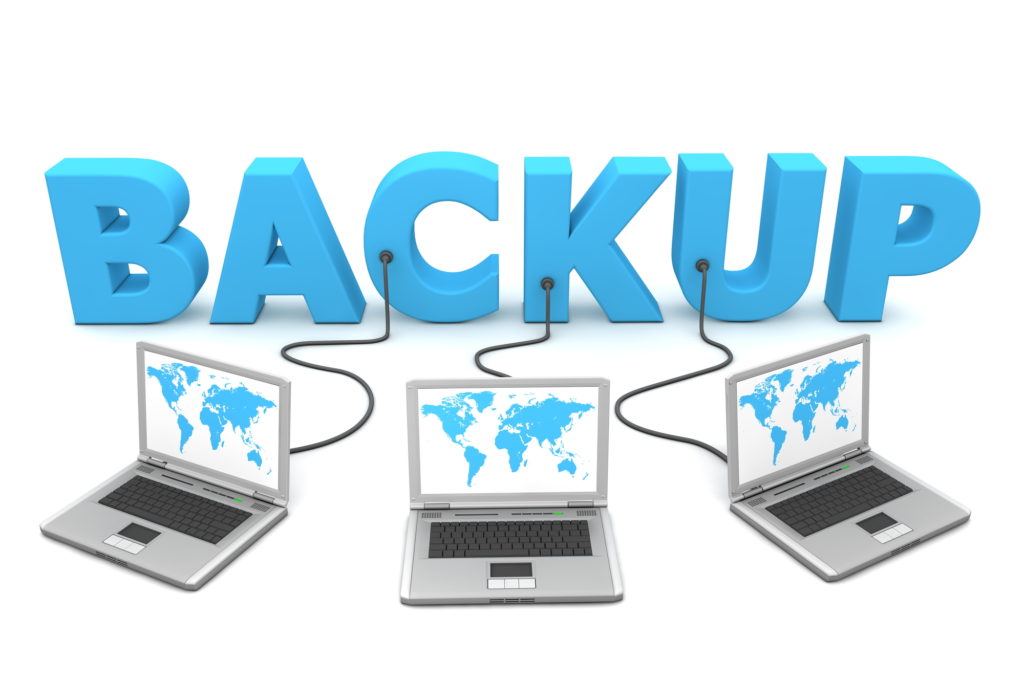Data Backup Mistakes Your Business Can Make
That’s what backup software is all about; it’s the safety net when you have a computer failure. Without it, things tend to go badly. The odds say you’re going to have a data failure and you need to have backups.

Of course, having the safety net is one thing, but you’ve got to properly set it up! Here are the biggest business mistakes we’ve seen people make when it comes to backing up their data; the following examples are straight from actual IT situations.
Not having enough storage room on your backup media
It happens so often. Excited after buying their ‘set-and-forget’ automated backup software, your business’s SysAdmin faithfully sets it all up. Several months later, there’s a server crash. “Not to worry!”, they announce, “I set up some backup software to copy our server, every week, to our dedicated backup media.”
That confidence, however, turns to despair when they go to check it… and find out the last successful backup was three months ago. The reason? That’s when the backup media ran out of space, and so every backup job since then has failed… meaning your business has lost three months of work, not to mention customer data.
The way around this is to make sure you’ve properly calculated how much storage space you’re going to need for your backups. If your backup strategy requires you to have a set number of server backups at any given time, do the math.
The next thing you can do is have backup software that gives you automated alerts and reports on the success and failure of your backups. Some will let you set up mailing groups to keep everyone who needs to know in the loop, so when your backup destination fills up, it doesn’t come as an eleventh-hour shock.
Not Having Offsite Backups
Whenever you’re ensuring your business continuity, you want to make sure there’s no single points of failure—something bad that if it occurs, stops your entire business dead in its tracks. It’s disaster planning 101.
If you’re only keeping your backups on-site, then you’ve got a big single point of failure. Imagine your backups are kept in the server room. Filled with electronics, something catches on fire, and everything in that room is ruined. Since your backups are kept in there, you haven’t just lost your live server—you’ve lost the backups you had prepared just for such an emergency.
What if you have a flood, storm, earthquake, theft, or employee sabotage. All of these situations end the same and you have lost everything in one swoop, and all your business data along with it. No matter the quality of your backup software, if you keep everything on-site, you’re opening yourself to risk.
The simplest solution to this is storing at least one backup off-site, either physically or with a cloud provider. This way, even if your entire site was to go down in flames, you’ve still got your business data to resume operations at a different venue.
Not Rotating Your Backup Media
People will keep backing up to a single local or external drive, usually because they’re too busy to switch or unplug them. Then, when disaster strikes—whether it’s hardware or human error, a virus, or something else—they’ve lost the only backup device they had.
This is a big problem when it comes to malware, which will first infect your system and then travel on to any connected device. This means your business data, and the backups of your business data, are both taken out in one fell swoop.
Not backing up regularly enough
When you’re putting in place a backup strategy, you should always ask yourself this question: ‘How much data, measured in time, can we afford to lose before it causes unacceptable damage to the business’?
The answer to these two questions is known as your Recovery Point Objective (RPO), and a lot of people don’t have a backup strategy that meets it. For example, you may be only backing up once every 24 hours, but you can only ever afford to lose a maximum of 10 hours of data. In this scenario, you need to be backing up at least every ten hours to meet your RPO.
Is your business is currently meeting its RPO. If it’s not, then your business is at risk of suffering irreparable damage from a data disaster.
Using Only One Kind of Backup Media
This is almost as bad as using only a single backup device. Imagine you’re using only a certain brand of tape to backup your business data, and it just so happens that brand isn’t very reliable. Unfortunately, when disaster strikes, you go to recover your data only to find out they’re all faulty. This sort of issue is easily avoided by just using two different kinds of backup media.
No Outage Plan
When disaster strikes, the last thing you want to be doing is running around figuring out whose responsibility it is to deal with what, and what you’re meant to do. You want your backup strategy all figured out step by step, so business operations are disrupted as little as possible.
Find out what kind of technical support services your backup software provider offers. If they do offer technical support, it will help you out greatly when you’re performing a disaster recovery—they know the software you’re using inside and out, and they help people like you survive IT disasters dozens of times a day, all year round.
No Test Restores or Trial Runs
This is the most ignored rule and by far the biggest pitfall when it comes to business backups. People assume that because their backup software or media is top of the range, that they will be able to restore their data 100% of the time in a disaster, without fail.
Magnetic drives can lose orientation. Electrically charged media loses its charge. Optical media breaks down as plastic degrades. And then there’s the chance your backup job simply failed, or one of your applications caused corruption in it. There are so many reasons it can happen.
Corruption in your backups, even if you’ve got the best backup software and hardware in the world, is something you’ve got to actively fight. And the best way to do that is a test restore. Performing a test restore is also a great trial run for what you need to do in an emergency, like a fire drill. It also lets you see how reliable and fast your chosen backup software is in an emergency.
All of these ideas work great if you’ve got a reliable and stable backup solution. Contact Computer-Wiz for help with your backups.
